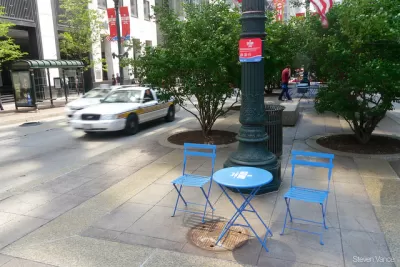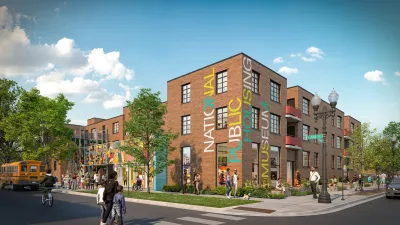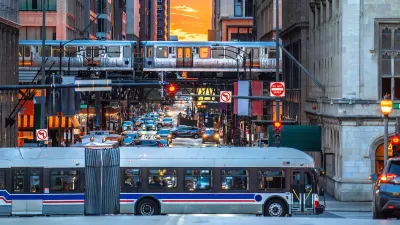Launched with neighborhood-friendly ambitions, Chicago's people plaza program was meant to create revenue-generating gathering places. A Chicago Tribune editorial says it's hard to find any people at the plazas, however.

The Chicago Tribune's editorial board revisits the "people plazas" ideas put forward by Mayor Rahm Emanuel as a way to reinvigorate vacant city-owned lots. The ideas as to create live music venues and art exhibits, and offer a place to "gather, mingle, shop at pop-up stores, dance even" in residential neighborhoods.
The editorial board offers a blunt assessment of the people plazas program, however: "Almost two years later, there's something missing from the people plazas. People." The editorial provides more background on how the program was meant to launch and operate:
The program was supposed to transform 49 pieces of vacant or underused city-owned land into gathering places "that reflect the unique and dynamic cultures of the various neighborhoods," according to the city's bidding documents. The hope was that the plazas would eventually become self-sustaining — companies would be permitted to advertise at the plazas, as well as sell food or merchandise. The city would get a 10 percent cut of the net profits, and the company hired to make the people plaza project happen, Latent Design, would get the rest.
The Tribune has found no evidence that the program has achieved even middling success. So far the city has spent $164,000 on the program while raising only $8,000 in revenue. The editorial thus suggests that both the Mayor's Office and the alderman with people plazas in their districts apply more pressure for results.
[Ed's note: the Tribune says the people plaza program was launched in 2015, but we see evidence of the term dating back to 2013.]
FULL STORY: Chicago's unpopulated 'people plazas'

Trump Administration Could Effectively End Housing Voucher Program
Federal officials are eyeing major cuts to the Section 8 program that helps millions of low-income households pay rent.

Planetizen Federal Action Tracker
A weekly monitor of how Trump’s orders and actions are impacting planners and planning in America.

Ken Jennings Launches Transit Web Series
The Jeopardy champ wants you to ride public transit.

‘Smart Surfaces’ Policy Guide Offers Advice for Building and Maintaining Urban Tree Canopies
Healthy, robust tree canopies can reduce the impacts of extreme heat and improve air quality.

New Jersey Lawsuit Targets Rent-Setting Algorithms
The state of New Jersey is taking legal action against landlords and companies that engage in what the state’s Attorney General alleges is illegal rent fixing.

Washington Legislature Passes Rent Increase Cap
A bill that caps rent increases at 7 percent plus inflation is headed to the governor’s desk.
Urban Design for Planners 1: Software Tools
This six-course series explores essential urban design concepts using open source software and equips planners with the tools they need to participate fully in the urban design process.
Planning for Universal Design
Learn the tools for implementing Universal Design in planning regulations.
Heyer Gruel & Associates PA
Ada County Highway District
Institute for Housing and Urban Development Studies (IHS)
City of Grandview
Harvard GSD Executive Education
Toledo-Lucas County Plan Commissions
Salt Lake City
NYU Wagner Graduate School of Public Service





























